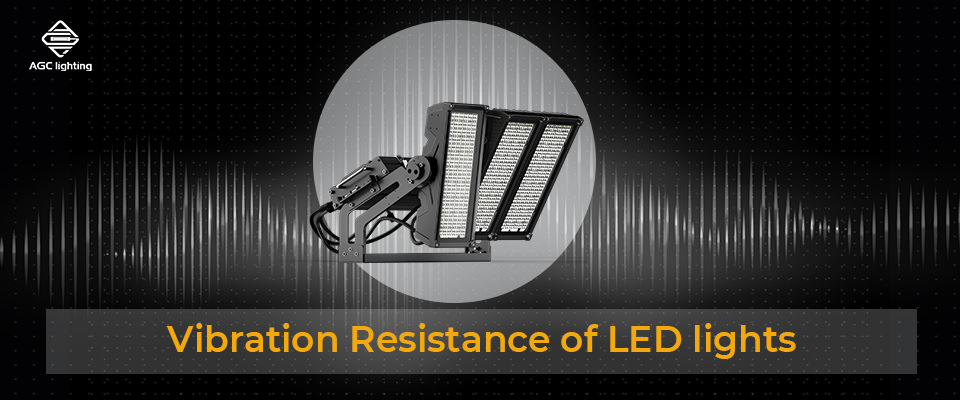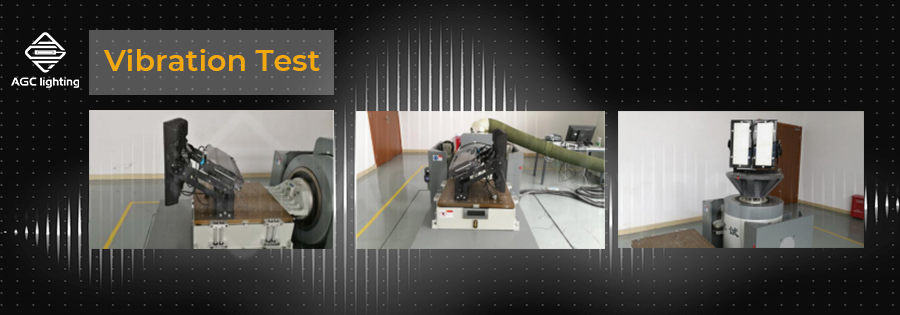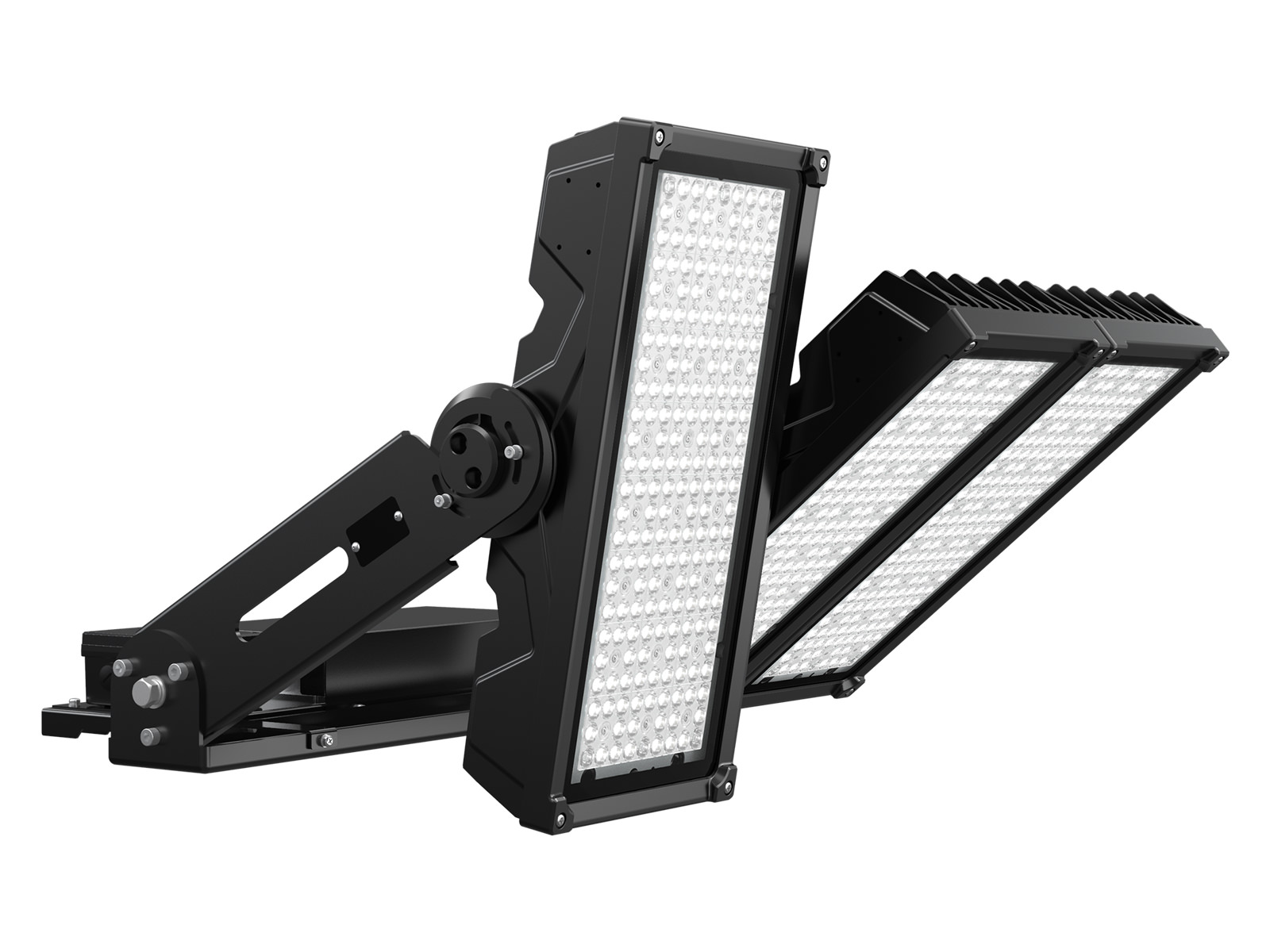Currently, LED lights are used all over the world due to their high efficiency, low power consumption, and long lifespan. Though LED lights are powerful, their performances are affected by many factors in practical applications. In particular, the harsh environment will reduce the reliability of LED lights, causing failures. Thus, every LED light must pass several tests, such as thermal shock and rain tests, to meet relevant standards.
IP rating and IK ranting are well-known as the measurements of ingress and impact resistance. Vibration also is an important factor in the reliable performance of LED lights. But it is often ignored. For applications such as bridges, roadways, loading docks, and tunnels, the vibration resistance of LED lights is critical. This post will show the 4 common questions the answers about the vibration resistance of LED lights. Hope this post can help you figure out the vibration resistance of LED lights.

Are LED lights sensitive to vibration
It is a myth that LEDs are sensitive to vibration. In fact, LEDs are shock and vibration-resistant. Generally, the sensitivity of LED lights to vibration is judged by whether they can function and illuminate normally under the stress of vibration.
LEDs are semiconductor devices comprised of juxtaposing n-type and p-type semiconductors. The current passing through the devices causes electrons and holes to compound in the devices, resulting in a light output corresponding to the energy to the semiconductor band gap. LEDs are cured on the brackets with glue and then connected to the circuit board by wires. At last, LEDs are sealed with epoxy to encapsulate and protect the electronic elements. The solid stage packet and non-filament design make LEDs shock and vibration-resistant. Therefore, LEDs are not afraid of vibration during transportation. It is also easy to install LEDs in any miniature or closed devices.
So far, it is not difficult to understand that LED lights are not sensitive to vibration as well. Since there are no filaments and moving parts, LEDs can emit light normally under shock and vibration. However, it doesn’t mean LED lights are robust enough to resistant all powerful vibrations, consistent and strong vibration can damage LED lights over time.
What are the effects of vibration on LED lights?
As just noted, Neither LEDs nor LED lights are sensitive to vibration. But LED lights are composed of more than LEDs. All electronic components, fasteners, mounting brackets, and others are affected by vibration. If vibration is beyond the capacity of LED lights, breakouts and failures may occur.
For example, LED lights are mounted on high poles to illuminate roadways or bridges. The combination of strong and consistent wind and traffic causes severe vibration, which vibrates the poles and threatens the stable support of LED lights. Such vibration may induce serious accidents.
Back to LED lights themselves, excess vibration can shatter the glass and lose the connections. Glass is one of the irreducible materials for most LED lights. The diffuser and lens of LED lights are made of glass commonly. Compared to other components, glass is fragile. As a consequence, vibration can result in cracking glass. To strengthen the resistance to vibration, tempered glass is selected to manufacture a diffuser or lens.
Another result of excess vibration is the loose connection. Various components are wired and connected together inside the LED light. Only with the power supply, can LEDs emit light. The vibration loses the connection of wires, blocking the power supply to LEDs, and resulting in flicker or breakouts.
What are the standards of vibration resistance of LED light
Various vibration testing standards are applicable to electronic equipment. Some of them concentrate on electrical safety and performance. Some of them focus on the minimum capability to perform under different environmental conditions. For lighting, three standards can be used to judge the vibration resistance of LED light.
-
IEC 60598-1
IEC 60598-1 is an international standard that specifies the requirements for the design, construction, and testing of electrical luminaires. This standard requires luminaires to be functional under the stress of vibration. Streetlights and floodlights have especially emphasized the resistance against vibration in this standard. Moreover, the standard also claims that the connection between each part of the luminaires should not be lost by vibration during normal operation.
-
IEC 60068-2-6
IEC 60068-2-6 is a testing standard that tests the performance of luminaire with sinusoidal vibration only. Luminaires should function well within the testing frequency range for a period. The test report states the tested frequency and performance of the luminaire. Though sinusoidal vibration is not common in practical conditions, it allows us to understand vibration in an easier way.
-
ANSI C136.31
ANSI C136.31 is an American national standard that specifies the minimum capacity to withstand vibration for the roadway and area luminaires. 3G Test acceleration rating is claimed by ANSI standards. A luminaire passed the 3G test means it can withstand the worst-case vibrations. This standard states that bridge or overpass luminaires are tested at 3.0 G. Luminaires for other places are tested at 1.5 G. Any loosened parts that can affect the safety and full function of luminaires are not allowed after the test.

How much vibration can LED lights withstand
In general, mechanical vibration ranging from 0 to 30Hz has a serious effect on LED lights. However, it is difficult to calculate the specific vibration resistance of LED lights. There are many factors that affect the capacity of LED light to withstand vibration. The main factors are the intensity and regularity of vibrations, the quality of LED lights, the distance from LED lights to vibrations, and the materials of LED lights.
Consistent and powerful vibration induces the potential failures of LED lights. Research showed that the intensity of LED lights decreased by 25% when they were 34.74 inches away from a 15Hz vibration. However, there were no significant effects on the light intensity at 39.74 inches. Long distance mitigates the vibration, and LED lights may perform normally under strong vibrations. Vibration may cause shattered glass and loss of connection.
If the glass of LED lights is not shatterproof, they are more likely to crack or explode even with low-intensity vibration. Although it is hard to define how much vibration can LED lights withstand, there is no need to worry about the sudden failures caused by vibration if you select the LED lights corresponding to relevant standards and regulations.













